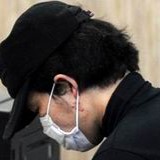
b: 1978
Jeong Sang-jin
Summary
Name:
Years Active:
2008Birth:
February 27, 1978Status:
Awaiting ExecutionClass:
Mass MurdererVictims:
6Method:
Arson / StabbingNationality:
South Korea
b: 1978
Jeong Sang-jin
Summary: Mass Murderer
Name:
Jeong Sang-jinStatus:
Awaiting ExecutionVictims:
6Method:
Arson / StabbingNationality:
South KoreaBirth:
February 27, 1978Years Active:
2008Date Convicted:
May 12, 2009bio
Jeong Sang-jin was born on February 27, 1978, in Jinju, located in South Gyeongsang Province, South Korea. Not much is publicly known about his early family life, but during police interrogation he revealed he had a troubled childhood and believed he had been persecuted from a young age. He also claimed to have attempted suicide twice during middle school, and later complained of recurring headaches which he said began during that time. These details hint at possible untreated mental health struggles, though no formal diagnosis was released by authorities.
In 2002, Jeong moved to Seoul, the capital of South Korea, in hopes of building a better life. He managed to sustain himself through various low-paying part-time jobs including working as a food delivery man and parking valet, but by April 2008, he was unemployed. He lived in a goshiwon which is a type of low-cost housing commonly used by students and the underemployed in South Korea, located in Nonhyeon-dong, Gangnam District.
Financially and emotionally overwhelmed, Jeong had failed to pay rent or even basic mobile phone bills for months. He was reportedly convicted eight times, including once for failing to attend mandatory military reservist training, which resulted in a fine of 1.5 million won.
murder story
On October 20, 2008, at around 8:15 a.m., Jeong Sang-jin executed a meticulously planned and horrifying attack inside the goshiwon where he lived, located in Nonhyeon-dong, a neighborhood within Seoul's Gangnam District.
That morning, Jeong doused his bed with gasoline and set it on fire, starting a blaze that quickly filled the third and fourth floors with thick smoke. Dressed entirely in black, wearing a balaclava, goggles, and a headlamp, he emerged from the smoke-choked hallway wielding a sashimi knife, along with two fruit knives strapped to his legs and a tear gas gun in a belt holster.
As terrified residents attempted to flee the fire, Jeong slashed and stabbed at anyone in sight. Five people died directly from the knife wounds, and another woman died after leaping from a fourth-floor window in a desperate attempt to escape the blaze. Seven more individuals were injured — four of them critically — either from the stabbing or from smoke inhalation and fire injuries. Among the dead and injured were three Chinese citizens, highlighting the random and indiscriminate nature of the massacre.
The fire itself lasted approximately 30 minutes, with over 100 firefighters deployed to bring it under control. At around 9:20 a.m., Jeong was discovered by firefighters hiding in a storage room on the building’s fourth floor. Initially believed to be just another survivor, his strange behavior quickly raised suspicions. Upon questioning, he confessed to the attack on the spot. He was arrested on the scene and taken to Gangnam Police Station, where he was formally charged with homicide and arson.
Jeong later admitted during interrogations that his motive stemmed from resentment and despair. He stated he “didn’t want to live anymore,” and felt powerless and scorned by society. He reportedly held bitterness toward wealthy or high-status individuals, but lacking access to those targets, he redirected his rage toward his more vulnerable neighbors.
During the investigation, some media blamed influences such as the violent Korean film A Bittersweet Life by Kim Jee-woon, which Jeong was said to enjoy. However, no direct connection between media consumption and the crime was proven. Instead, the incident drew chilling parallels to other mass casualty events that year, including Japan’s Akihabara massacre and South Korea’s Daegu subway fire.
Jeong was convicted and sentenced to death by the Seoul Central District Court on May 12, 2009. As of the last publicly available information, he remains on death row, with no reports of execution carried out.